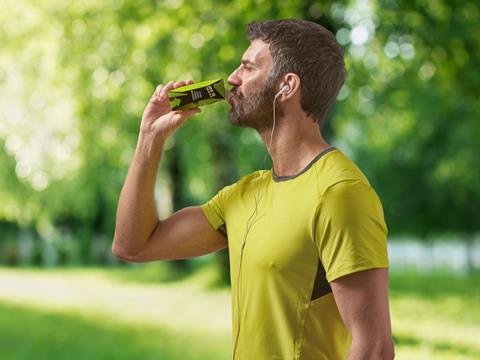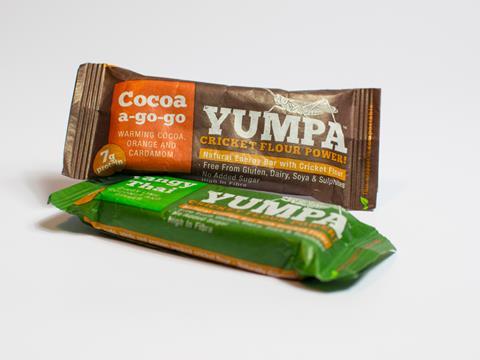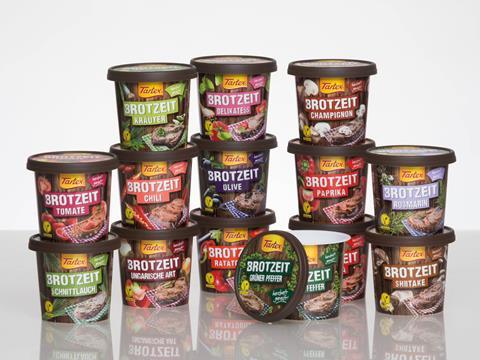
On-the-go packaging has enjoyed increasing popularity in recent years, and the trend shows no sign of slowing down. Elisabeth Skoda spoke to representatives from Parkside Flexibles, Sonoco, Ecolean and Tetra Pak to find out more about the latest innovations balancing consumer convenience and sustainability.
Phil O’Driscoll, head of innovation and NPD at Parkside Flexibles, points out that convenience and ease of use are significant factors across contemporary packaging design and new product development.
“Anything that makes life easier for the consumer - whether that’s easy-open, ease of portability or portioned food packs – added pack functionality is the key to satisfying the modern on-the-go consumer,” he says. “Brands and retailers are always looking for unique, innovative packs that offer good on-shelf presentation, deliver fresh appeal and drive sales by making their products stand out from the crowd. Consumers are seeking products that meet the needs of their busy lifestyles.”
More specifically, on-the-go packs need to fit consumers’ individual habits and lifestyles.
“Consumers are always on the move today, picking up snacks at a kiosk or in the supermarket and then consuming them in smaller portions on multiple occasions,” observes Séan Cairns, Sonoco’s VP and general manager for the European consumer products division. “They transport food for on-the-go consumption in handbags or backpacks, throw it into the back of their car or strap it to their bike’s luggage rack. We know that packaging plays a crucial role in spontaneous purchases at the Point of Sale. Products must not only stand out at POS with a cool, stylish design. Consumers also choose products based on pragmatic criteria like: Will it fit into my pocket? Is the packaging sturdy and reclosable? So, the ideal on-the-go product and its packaging are simple but attractive, easy to use, and reclosable, and fitting the personality of the individual consumer.”
Similarly, Riccardo Castagnetti, product director at Tetra Pak, also highlights today’s consumers busy lifestyles as a driver for innovation:
“Peoples’ eating routines are less fixed than in the past. Many people opt to skip breakfast to go to the gym or for a few extra minutes in bed. This means many people now have their first meal of the day while on-the-go. They are also increasingly likely to snack between lunch and dinner. The rise of this out-of-the home, on-the-go consumption creates demand for packages that are comfortable to hold, have re-sealable caps, and fit in handbags and backpacks.”
Keeping food safe
So how is the industry translating these needs into concrete innovation?
Parkside has developed several single portion, easy-open and reclosable packaging solutions in recent months to help their customers enhance their brand through packaging.
“We developed an innovative snack pack for the Walls sausage rolls range for Pork Farms, part of Addo Foods Group. The multi-cavity pack design taps into the on-the-go snacking market, offering the option to snap off one of five individually wrapped trays as required, while keeping the remaining sausage rolls sealed for later, giving consumers the ability to snack as well as exercise portion control. The tray also keeps the contents fresher for longer and can help to reduce food waste,” Mr O’Driscoll explains.

Easy opening and reclosing are also key for Sonoco. Both Sonoco’s composite cans and plastic packaging solutions are easy to open and reseal thanks to their flexible snap lids, as Mr Cairns points out.
Plastic packaging with Sonoco’s PermaSafe technology allows consumers to transport perishable foods such as spreads or fish outside the cold chain. Safe shelf-stable products are a growing sector as it brings so much more convenience and enables the consumer to eat anywhere.
“With composite cans, both the inner lining and membrane protect the contents from external influences such as moisture and oxygen. We can tailor the barrier to each application, limiting the materials used to only those that are absolute necessary. For composite cans, we use different barrier properties from membranes and liners, in the IML sector, we apply our PermaSafe technology. On top of this, our composite cans are very strong, retaining their form even when they are pushed on from all sides,” Mr Cairns says.
Anna Annerås, marketing director of Ecolean, highlights the novel technology of supplying hermetically sealed and sterile packages from Ecolean’s factory as the biggest innovation, from a technology perspective. It creates huge opportunities for dairy and beverage producers, as the complexity is moved from the customer to Ecolean.
“The Ecolean aseptic pouches for ambient distribution come ready-sterilised and pre-converted to the producers. To ensure the highest food safety, we’ve chosen a non-chemical sterilisation method, e-beam, to make sure food contact surfaces are never exposed to any chemicals,” she adds.
Ecolean recently announced the launch of its EL2+, an upgraded filling machine for chilled distribution portion-sized packages, with a clean, modern design that doubles capacity – all in the same footprint, enabling customers to produce even more on-the-go packages with less.
Another development she is keen to highlight is a 125ml package, available in the Ecolean® Air Aseptic product series for ambient distribution, with or without a straw.
“As with all Ecolean packages, the ease of use when opening, handling and pouring, together with its unique ability to be microwaved, attracts consumers, and liquid food producers worldwide.”
Smaller portion size is also a trend that Tetra Pak is catering for. In April, Tetra Pak extended its portfolio in the fast growing on-the-go beverage market with two new portion size packages, the Tetra Prisma® Aseptic 200 and 250 Edge with DreamCap™ 26.
“Building on the success of Tetra Prisma® Aseptic 330 ml with DreamCap™, the new packages offer consumers smaller size options with the same re-sealable one-step closure for an optimised drinking experience,” Mr Castagnetti explains.
Here to stay
The pace of modern life does not seem to be slowing, evidenced by several widely publicised consumer trends that suggest further growth is inevitable, Mr O’Driscoll observes.
“Meeting the convenience needs of consumers should be a key driver for retailers and food manufacturers who want to succeed in this competitive sector. The need to differentiate their product offering beyond the more standard packaging choices and address changing lifestyles will only increase. The convenience channel has been one of the fastest growing grocery retail sectors globally and as a result the sector is highly competitive. We believe this fast-paced market will continue to gain traction.”
He also believes that this is an ongoing, long-term trend – mainly due to the diversity of modern lifestyles and the ever-growing mobility of consumers.
“While people will always prepare and eat meals at home, they’re now eating more and more food on-the-go. This is why the need for convenient on-the-go packaging will grow considerably. In addition, Sonoco is observing other trends that coincide with the rise in on-the-go consumption, such as a strong move toward healthier options. For this type of food, the packaging should convey a strong message about the nutritional value of its contents. We can customise the paper labels of our composite cans with a natural finish, giving them a look that matches the contents. Other solutions like our Vegetop® lids made from biodegradable plastics also help bring the message home.”
Ecolean observes a strong demands for portion packs between 125ml and 250ml for both ambient and chilled distribution, as Ms Annerås adds “This trend, which will continue to grow, is a result of drastic lifestyle changes globally and has a complex nature with several socio-economic drivers making it very hard to predict”.
The on-the-go snack market is expected to grow over the next few years as consumer lifestyle changes take effect. According to research by Roper Reports Worldwide more than 40 per cent of consumers are snacking while on-the-go at least once a week, with fortified milk, drinking yogurt and energy drinks among favourite choices.
“Compass has also identified categories including coffee and tea-based drinks in 200 and 250ml portion sizes as being areas for very dynamic growth in the next three years. Tetra Pak’s own research anticipates that worldwide demand for portion packages under 250 ml will grow to 72 billion litres by 2019, up 10 per cent from current volumes,” Mr Castagnetti adds.
Balancing convenience against sustainability
Mr O’Driscoll sees balancing convenience and sustainability needs as a real dilemma for brand owners, and predicts that sustainable alternatives to traditional packaging will become ever more necessary, from a resource perspective and at the end of life journey.
“Demand for convenience often increases the demands on packaging, and we must be mindful that whilst people are ‘on-the-go’, they are not in as easy reach of managed waste outlets like recycling bins in the home.”
Parkside has developed a pioneering portfolio of compostable paper and film barrier films made predominantly from renewable sources such as eucalyptus trees. These are suitable for a range of applications from coffee pouches to confectionery packaging and are fully compostable for both home and industrial processes.
“Another example is our recent development for a home compostable pack for Yumpa, a newly launched snacking bar made from powdered cricket flour. Next Step Foods Ltd. wanted the packaging to enhance the whole brand experience, that being the natural benefits of the product and the ethical positioning,” Mr O’Driscoll says.
Mr Cairns highlights that it is important to not view convenience and sustainability as being in conflict, which is a common perception, but rather as two sides of the same coin.

Investment in R&D and advanced production facilities enabled Sonoco to have well-positioned packaging solutions for both.
“Our composite cans are made from 90-percent recycled paper, and are already one of the most sustainable consumer packaging solutions on the market. The same is true for our plastic packaging business: We produce and decorate our plastic containers with In-mould Labelling. For this state-of-the-art technique, the labels and containers are made from the same material: polypropylene. Thus, they can be easily recycled without the consumer having to separate the label and container,” Mr Cairns says.
Ecolean has found the balance between offering a lightweight package with as little resources as possible and still not compromise on food safety or convenience features of the package, as Ms Annerås is happy to report.
“We see to the whole lifecycle of the package and make sure that it is produced in a sustainable way. Our pack stands steady, even when half-full. Its flexible nature makes it easy to empty completely, which means no food waste. The air-filled handle helps when pouring and handling. And once empty, it takes up a minimal amount of space in the bin.”
Tetra Pak also takes its environmental sustainability seriously, as Mr Castagnetti explains.
“All Tetra Pak cartons are made mainly from paper, a renewable source, and are available with FSC™ certified packaging material, ensuring that the wood fibre is sourced from responsibly managed forests. The availability of bio-based caps made from a non-food substance derivative of sugar cane also contributes to the renewability of the packages,” he concludes.














